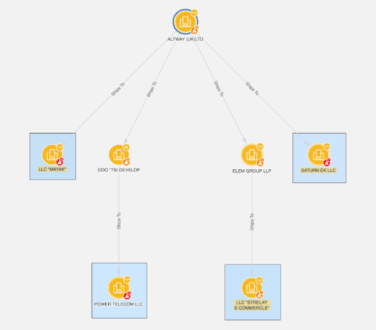Industrial companies, particularly those in advanced manufacturing, are heavily impacted by regulations intended to prevent items from being exported to military end users (MEUs), and the list of restricted entities is only getting longer.
Conducting due diligence to identify list-based risk is a key requirement for export compliance. However, industrial manufacturers must also detect non-list-based risk to prevent diversion of dual-use or sensitive goods to sanctioned entities and confidently address the urgent question: “How can I prevent my products from showing up in an adversary’s weapons systems?”
List-based risk grows for the industrial sector
As the producers of bearings, machine tools, electronic integrated circuits, semiconductor manufacturing equipment, testing equipment, and navigational instruments — all found on the Bureau of Industry and Security (BIS) Common High Priority Items List (CHPL) list — industrial manufacturers have many products to protect against diversion for military use.
Manufacturers must also contend with a growing list of restricted entities. The BIS Entity List of companies subject to export restrictions has grown from 1,350 entries in 2019 to approximately 3,350 as of March 2025.
Identifying list-based risk is only part of MEU due diligence
Screening for list-based risk is a foundational requirement for trade compliance teams. However, not all risk is called out on a list. For example, while the new BIS 50% rule increases the number of entities subject to export control regulation, the rule doesn’t provide a corresponding screening list. Rather, it mandates that any entity that is at least 50 percent owned by one or more entities on the Entity List or the MEU List will itself automatically be subject to the same export restrictions as its listed owners. Previously, subsidiaries, parent companies, and sister companies were legally distinct from listed entities. Therefore, licensing and other obligations imposed on a listed entity did not apply to these subsidiary, parent, and sister companies. With this new rule, thousands of subsidiaries are subject to the same restrictions as their watchlisted owners. Traditional screening lists do not include these now-restricted subsidiaries.
>> Hear Akin’s Kevin Wolf, Matt Borman, and Eileen Albanese break down the BIS 50% Rule <<
Comprehensive export control due diligence requires that industrial compliance teams go beyond lists to map their customers’ upstream ownership, screen for addresses, and uncover risk of illicit transshipment, particularly for high-risk regions like Russia and China. Failure to exercise sufficient diligence means facing substantial fines, loss of market access, and brand reputation damage.
Sayari’s report Mitigating Diversion Risk of Dual-Use Technology Using Public and Commercial Data highlights a case study of transshipment risk. Our data revealed both obvious and less obvious risk in Altway (UK) Limited’s trade history. The less obvious risk is Altway’s indirect exposure to Russia via shipment of dual-use goods to Elem Group in Kazakhstan and TSI Develop in Uzbekistan who, in turn, shipped some of the same goods to Russia. This potential transshipment would warrant further diligence by a manufacturer looking to potentially sell covered dual-use electronics to Altway.

Fig 1: Sayari Graph network chart depicting Altway (UK) Ltd’s direct and indirect trade exposure to Russia. Entities in blue are based in Russia.
To meet the complex challenges of identifying non-list-based risk, such as transshipment, means that manufacturers must replace inefficient, manual research across multiple jurisdiction databases with a single solution to map the evidence-based trade relationships and corporate networks of customers and distributors.
>> Learn techniques to reduce the risk of exporting to Chinese military companies <<
Sayari for MEU due diligence
Sayari’s combination of comprehensive corporate and global trade data empowers compliance teams to make confident decisions to stay on the right side of export regulations. Sayari helps organizations rapidly identify risky end-use scenarios and prevent diversions to unauthorized entities by providing deep visibility into MEU risk factors — including watchlisted entities, Russian contractors engaged in sensitive or military projects, and entities likely involved in Chinese military-civil fusion campaigns — and by uncovering ultimate beneficial ownership (UBO) to detect when entities are 50% or more owned by a restricted party.
The Sayari Signal MEU and Military Intelligence End User (MIEU) module identifies entities that may be subject to the restriction of exports of sensitive goods and technologies because of their involvement in military activities. The Signal BIS50 module identifies thousands of entities majority-owned by BIS Entity List and MEU List companies to support compliance with the recent BIS 50% rule.
>> Discover how the Sayari BIS50 Signal Module enhances export control due diligence <<
When integrated with Sayari Graph, our flagship product for in-depth entity investigation, Signal empowers industrial compliance teams to not only stay ahead of sudden regulatory shifts by proactively identifying high-risk entities before they are flagged by regulators, but also to leverage context to make faster, more informed decisions about the risks they face.
To learn more about how Sayari can help your trade compliance team conduct efficient due diligence and stay ahead of rapidly changing regulatory requirements, request a personalized demo.



